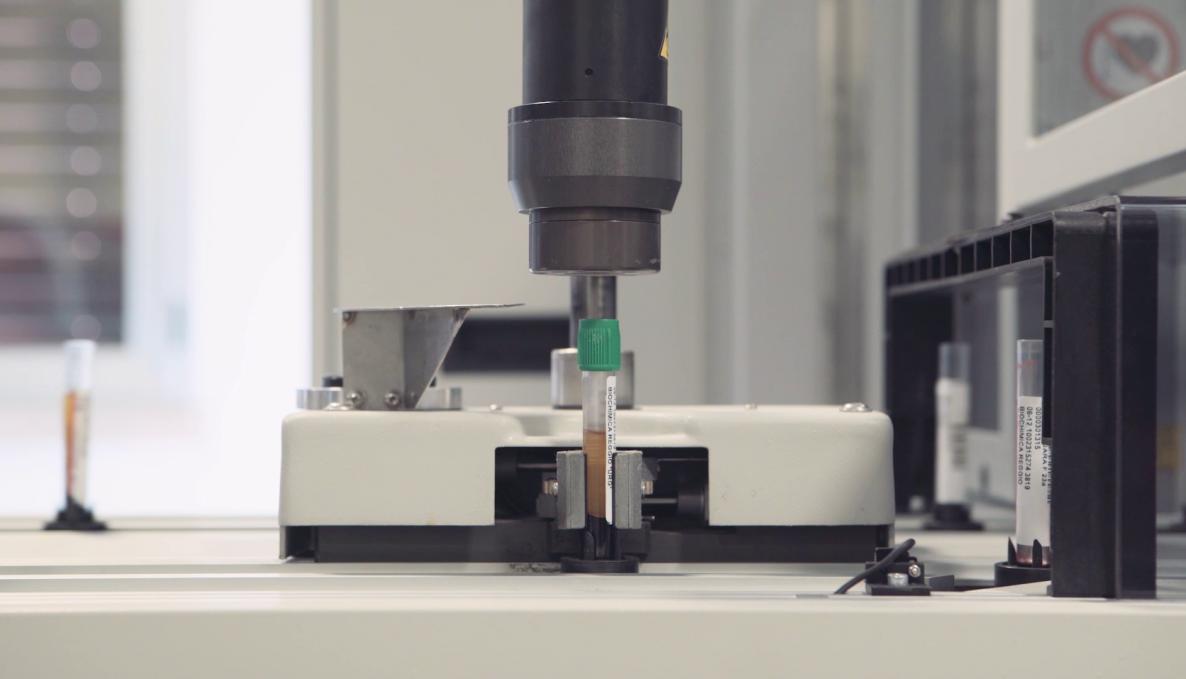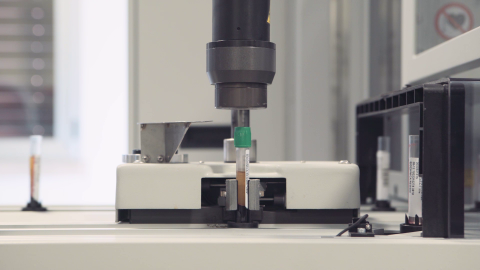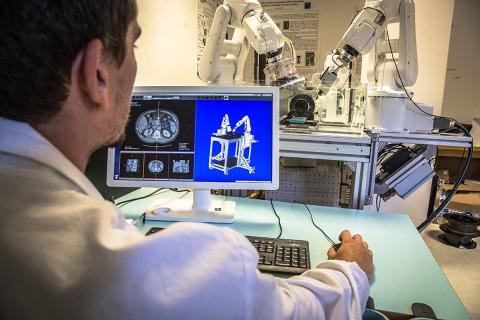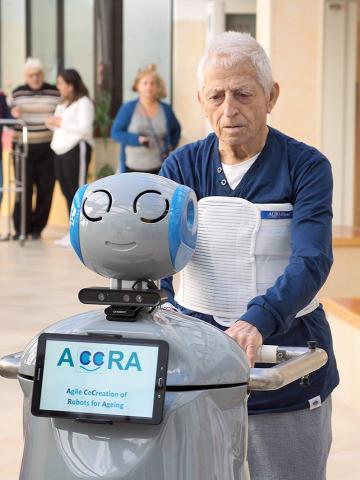THE ROLE OF ROBOTICS IN COMBATING COVID-19: HUMAN-ROBOT INTERACTION CAN HELP FIGHT THE EPIDEMIC. Paolo Dario, Professor of Biorobotics at Sant’Anna School,along with twelve colleagues, edited the study in journal Science Robotics

A global response to the Covid-19 pandemic is vital to combat a global health crisis. All countries must maximize their efforts to contain the virus and prepare health systems and communities for unpredictable consequences. Globally, doctors, nurses, and health care workers are seeing rapidly increasing case numbers worldwide. Measures taken in the coming weeks will be crucial to save lives and plan for any critical tasks and services that could fight the disease and its economic and social effects on our communities.
Robotics has the power to improve the health and safety of individuals and patients and provide cost-effective solutions to contribute to the control of epidemic with disinfectant-spraying robots and drones monitoring people during lockdown.
Scientists worldwide continue to work at an unprecedented pace to reduce the impact of this pandemic and enhance the research agenda to build a plan of immediate and longer-term priorities including vaccines, treatments and diagnostics. In most of the world, researchers and engineers are invited to discuss the role of automation in supplementing human skills and helping doctors do their jobs. Paolo Dario, Professor of Biorobotics and the Vice-Rector for third mission activities at Sant’Anna School Pisa, along with twelve colleagues edited the study “Combating COVID-19 — The role of robotics in managing public health and infectious diseases” published in journal Science Robotics to explore the potential of robot technologies in expanding the human-robot interaction to combat the growing worldwide public health emergency.
Telemedicine can help doctors engage with patients where physical contact must be limited, robots can be deployed for disinfection, delivering medications and food, measuring vital signs including temperature, heart rate and blood oxygen levels, monitoring quarantined people and implementing lockdown measures.
China has launched robotic applications for decontamination, remote-controlled disinfection, infrared sensors and artificial intelligence systems to predict people’s temperatures in public areas and ports. As disease continues to spread in Spain, everyday hundreds of people are being tested for the virus. Robotics technology can accelerate the results of swab tests carried out with a sample being taken either from the nose or the throat by medical staff who need to wear personal protective equipment. Delivering results quickly is crucial for doctors to follow up patients in isolation or quarantine and reduces the number of patients that are unnecessarily followed up.
The pandemic requires an immediate response to support health systems and societies around the world. Over recent weeks Italy has acted decisively for the health of its citizens as the continued rapid spread of this virus poses an increasing challenge on the scientific community.
“We are seeing the devasting impact of the virus and we must all support the public health authorities and healthcare workers. Robots can make a useful contribution. We need to coordinate national and European efforts, investments in research and public health to ensure that everyone can benefit from research excellence and collaboration of scientists and clinicians. Autonomous robotics technologies will help in the advancement of therapies and diagnostics. Sant’Anna School is at the forefront of national efforts to protect our communities. As a higher education institution, we have been developing advanced robotic applications for over thirty years. Now, we are ready to prepare Italy to respond to future pandemics, so that no one is left behind.” says Paolo Dario.
Authors of study “Combating COVID-19 — The role of robotics in managing public health and infectious diseases” include Guang-Zhong Yang, Institute for Medical Robotics - Shanghai Jiao Tong University; Bradley Nelson, Robotics and Intelligent Systems - ETH Zurich; Robin R. Murphy, Computer Science and Engineering - Texas A&M University; Henrik Christensen, Contextual Robotics Institute, Jacobs School of Engineering - University of California San Diego; Steven Collins, Department of Mechanical Engineering - Stanford University; Paolo Dario, BioRobotics Institute Sant’Anna School Pisa; Ken Goldberg, Industrial Engineering and Operations Research - University of California, Berkeley; Koji Ikuta, Graduate School of Information Science and Technology - University of Tokyo; Neil Jacobstein, Artificial Intelligence and Robotics - Singularity University, NASA Research Park; Danica Kragic, School of Electrical Engineering and Computer Science - Royal Institute of Technology, Stockholm; Russell H. Taylor, Laboratory for Computational Sensing and Robotics - Johns Hopkins University, Baltimore; Marcia McNutt, National Academy of Science - National Research Council, Washington; Howie Choset, Computer Science - Carnegie Mellon University, Pittsburgh.






